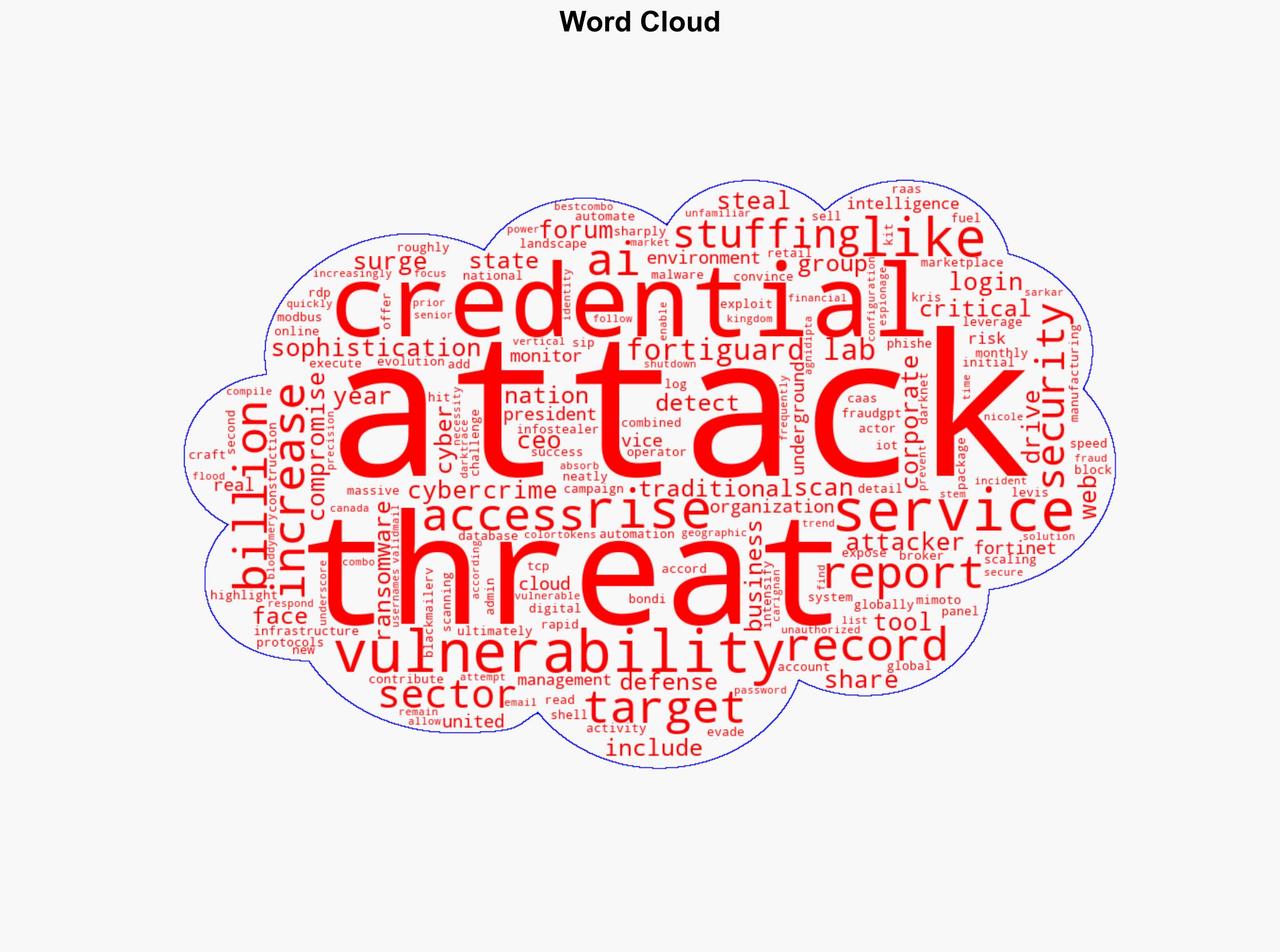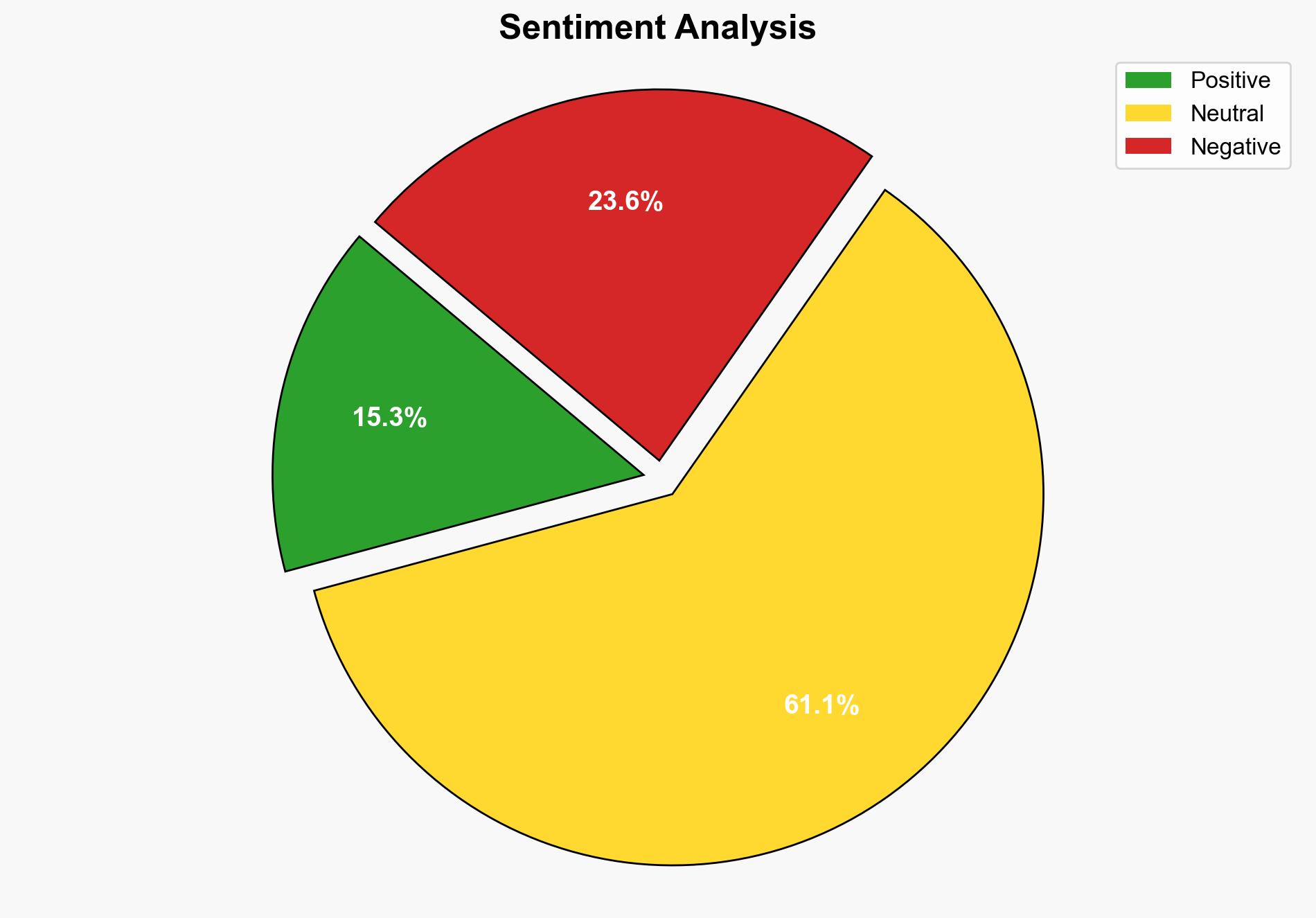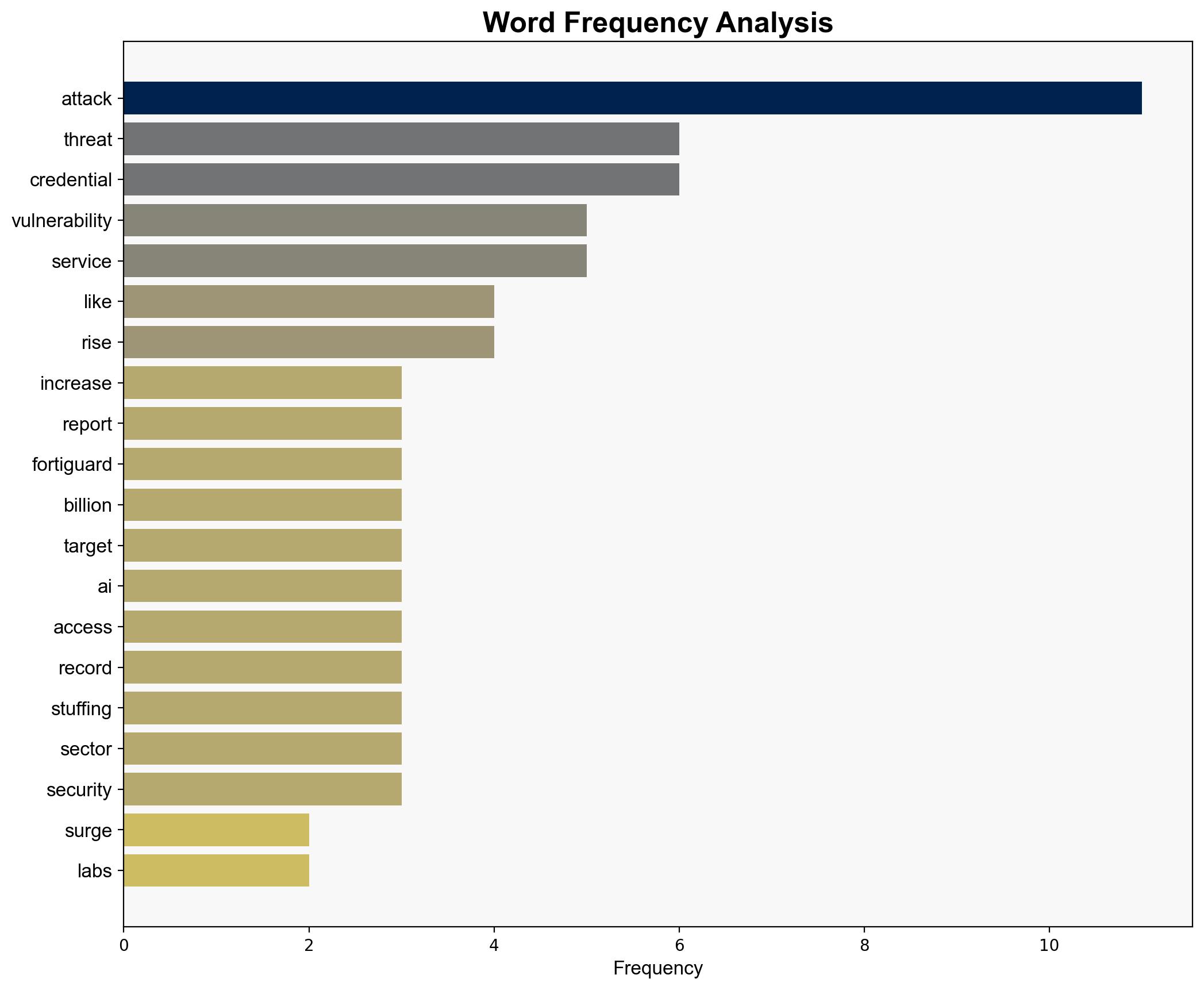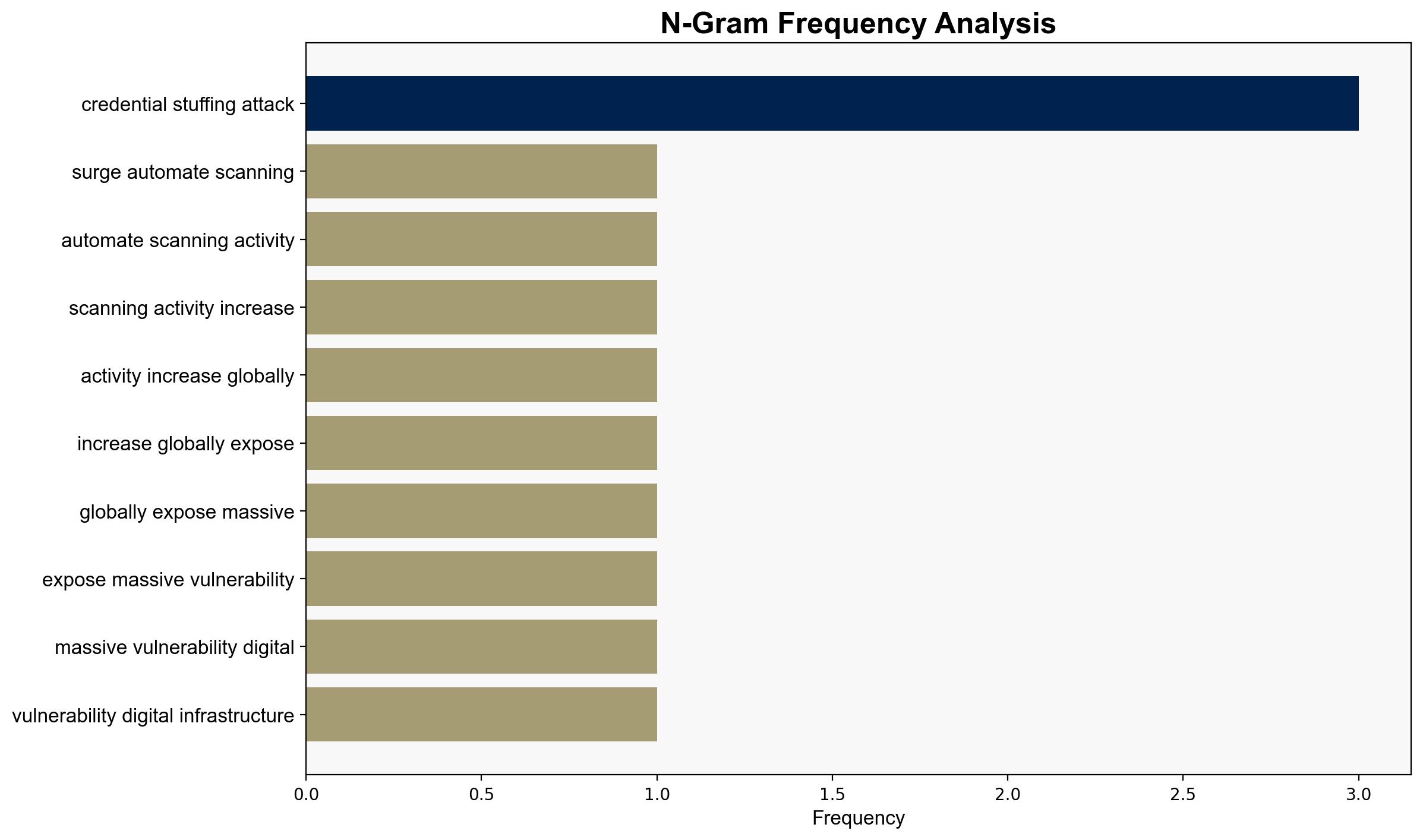Researchers Note 167 Increase in Automated Scanning Activity – Infosecurity Magazine
Published on: 2025-04-28
Intelligence Report: Researchers Note 167% Increase in Automated Scanning Activity – Infosecurity Magazine
1. BLUF (Bottom Line Up Front)
The report highlights a significant 167% surge in automated scanning activities targeting global digital infrastructures, exposing critical vulnerabilities. Threat actors are leveraging AI and automation to enhance the speed and sophistication of cyberattacks, posing heightened risks to critical sectors such as manufacturing, business services, and retail. Immediate strategic shifts towards intelligence-led defense mechanisms are recommended to mitigate these escalating threats.
2. Detailed Analysis
The following structured analytic techniques have been applied to ensure methodological consistency:
Analysis of Competing Hypotheses (ACH)
The surge in scanning activities is likely driven by increased availability of cybercrime-as-a-service (CaaS) platforms and the proliferation of AI tools like FraudGPT. Alternative hypotheses, such as isolated incidents or non-malicious research activities, are less supported by the evidence.
SWOT Analysis
Strengths: Adoption of AI-powered security solutions enhances real-time threat detection capabilities.
Weaknesses: Many organizations lack robust identity monitoring and secure configuration practices.
Opportunities: Implementing continuous threat exposure management can significantly reduce attack surfaces.
Threats: Increasing sophistication of ransomware-as-a-service (RaaS) and nation-state actors targeting critical sectors.
Indicators Development
Key indicators include a rise in phishing campaigns, increased lateral movement within networks, and the proliferation of credential stuffing attacks. Monitoring these signs can provide early warnings of potential breaches.
3. Implications and Strategic Risks
The escalation in automated scanning and cyberattacks poses systemic risks to national security and economic stability. The interconnected nature of critical infrastructure means a successful attack could have cascading effects across multiple sectors, potentially disrupting essential services and causing significant economic damage.
4. Recommendations and Outlook
- Shift to an intelligence-led defense strategy, incorporating real-world adversary simulations and attack surface management tools.
- Enhance identity monitoring and secure configuration practices to prevent unauthorized access.
- Scenario-based projections suggest that without intervention, the frequency and impact of attacks will continue to rise, with the worst-case scenario involving widespread infrastructure disruption.
5. Key Individuals and Entities
Kris Bondi, Nicole Carignan, Agnidipta Sarkar, Rom Carmel.
6. Thematic Tags
(‘national security threats, cybersecurity, counter-terrorism, regional focus’, ‘cybersecurity’, ‘counter-terrorism’, ‘regional focus’)




